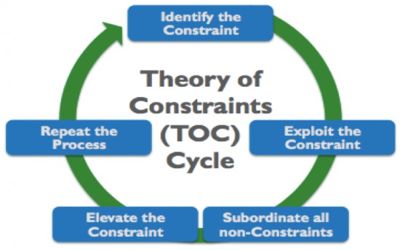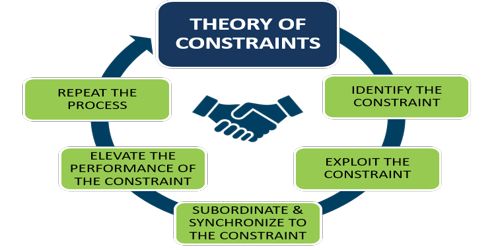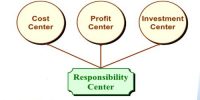Theory of Constraints (TOC)
The Theory of Constraints is a methodology for identifying the most important limiting factor (i.e. constraint) that stands in the way of achieving a goal and then systematically improving that constraint until it is no longer the limiting factor. In manufacturing, the constraint is often referred to as a bottleneck. It is a management philosophy which is focused on the weakest ring(s) in the chain to improve the performance of systems.
Theory of Constraints provides a set of holistic processes and rules, all based on a systems approach that exploits the inherent simplicity within complex systems through focusing on the few “leverage points” as a way to synchronize the parts to achieve ongoing improvement in the performance of the system as a whole. Basically, the theory of constraints is a management philosophy designed to help organizations achieve their goals.
The Theory of Constraints takes a scientific approach to improvement. It hypothesizes that every complex system, including manufacturing processes, consists of multiple linked activities, one of which acts as a constraint upon the entire system (i.e., the constraint activity is the ‘weakest link in the chain’).

A successful Theory of Constraints implementation will have the following benefits:
- Increased profit (the primary goal of TOC for most companies)
- Fast improvement,
- Improved capacity,
- Reduced lead times,
- Reduced inventory (eliminating bottlenecks means there will be less work-in-process)
So what is the ultimate goal of most manufacturing companies? To make a profit – both in the short term and in the long term. The Theory of Constraints provides a powerful set of tools for helping to achieve that goal.














